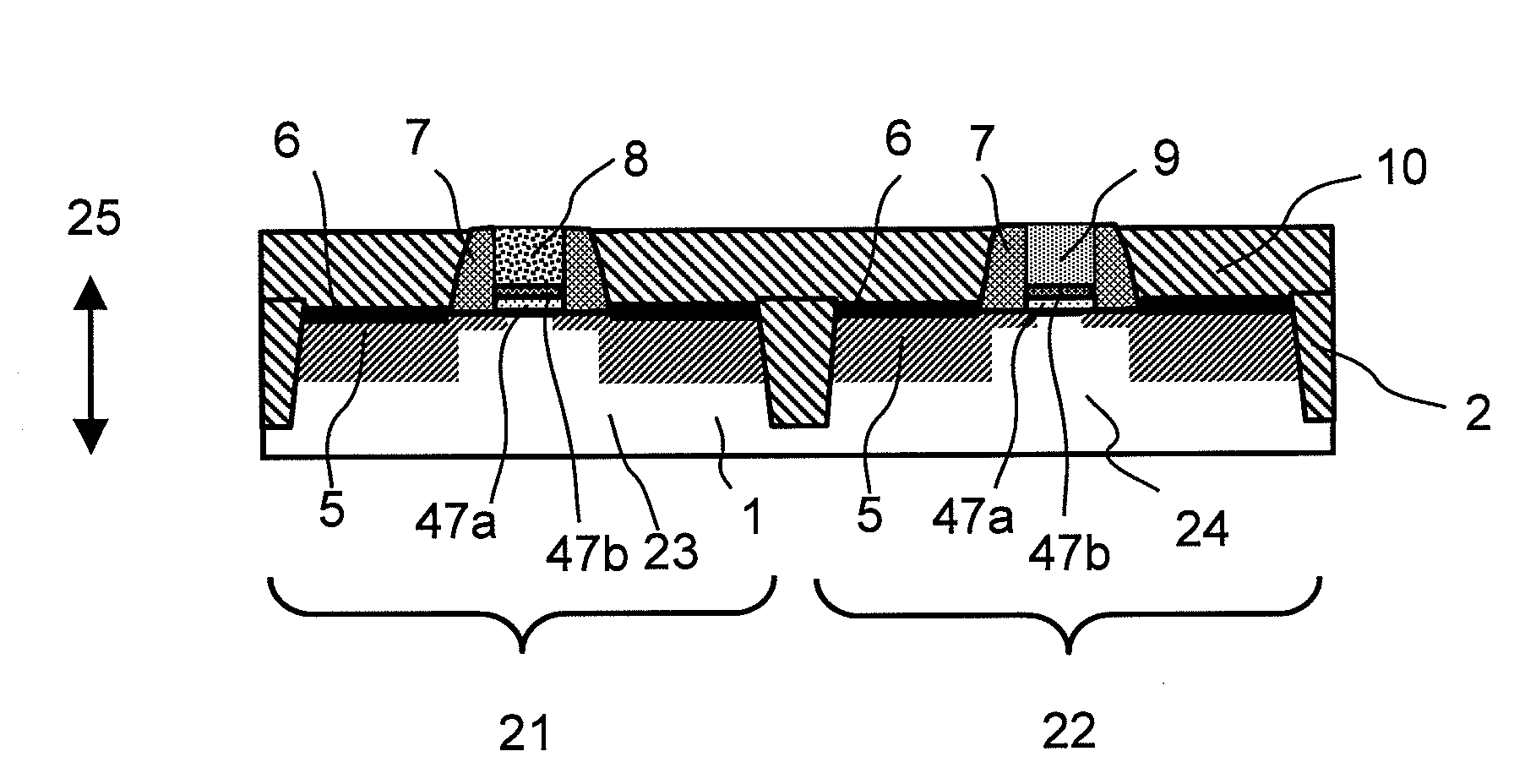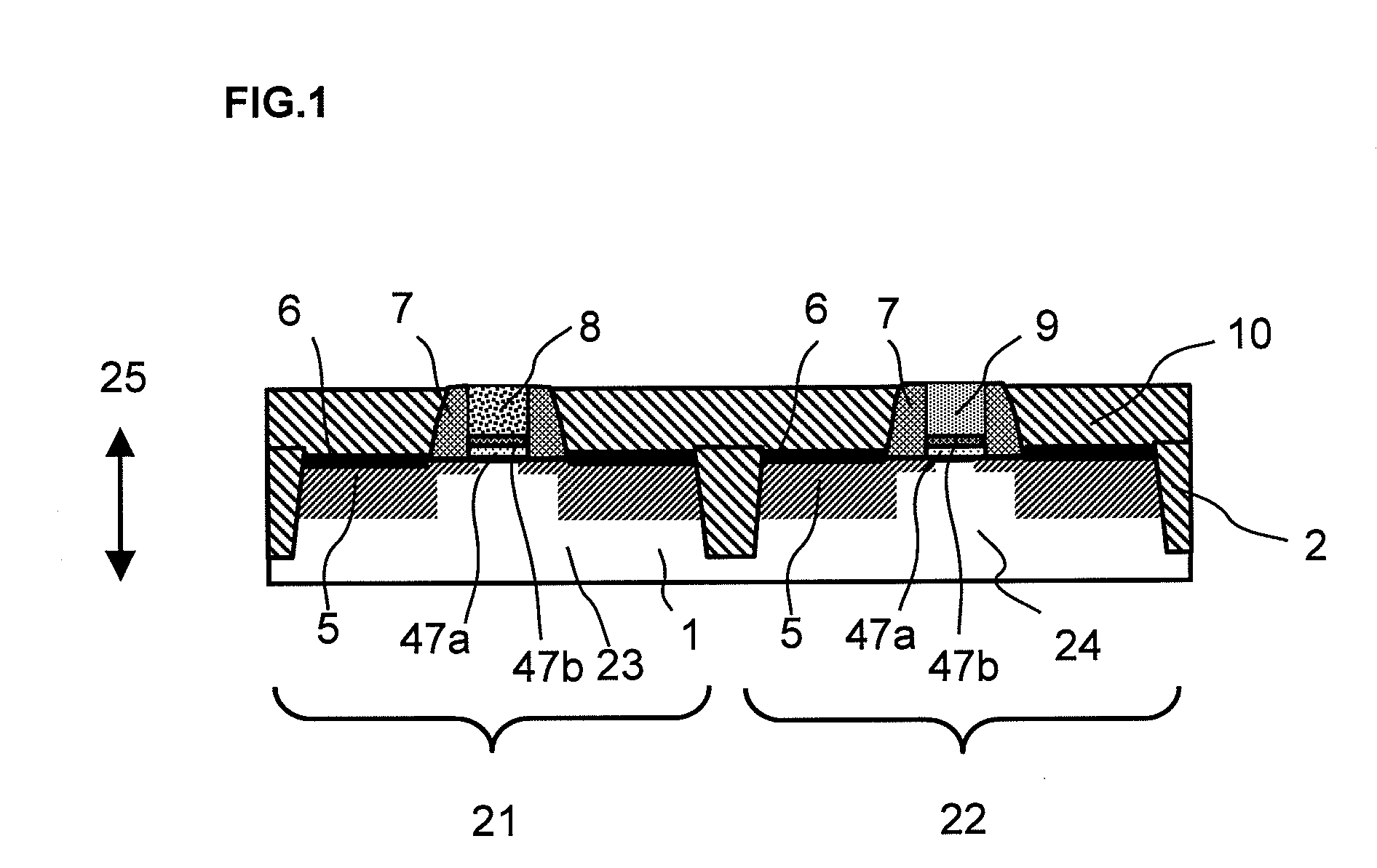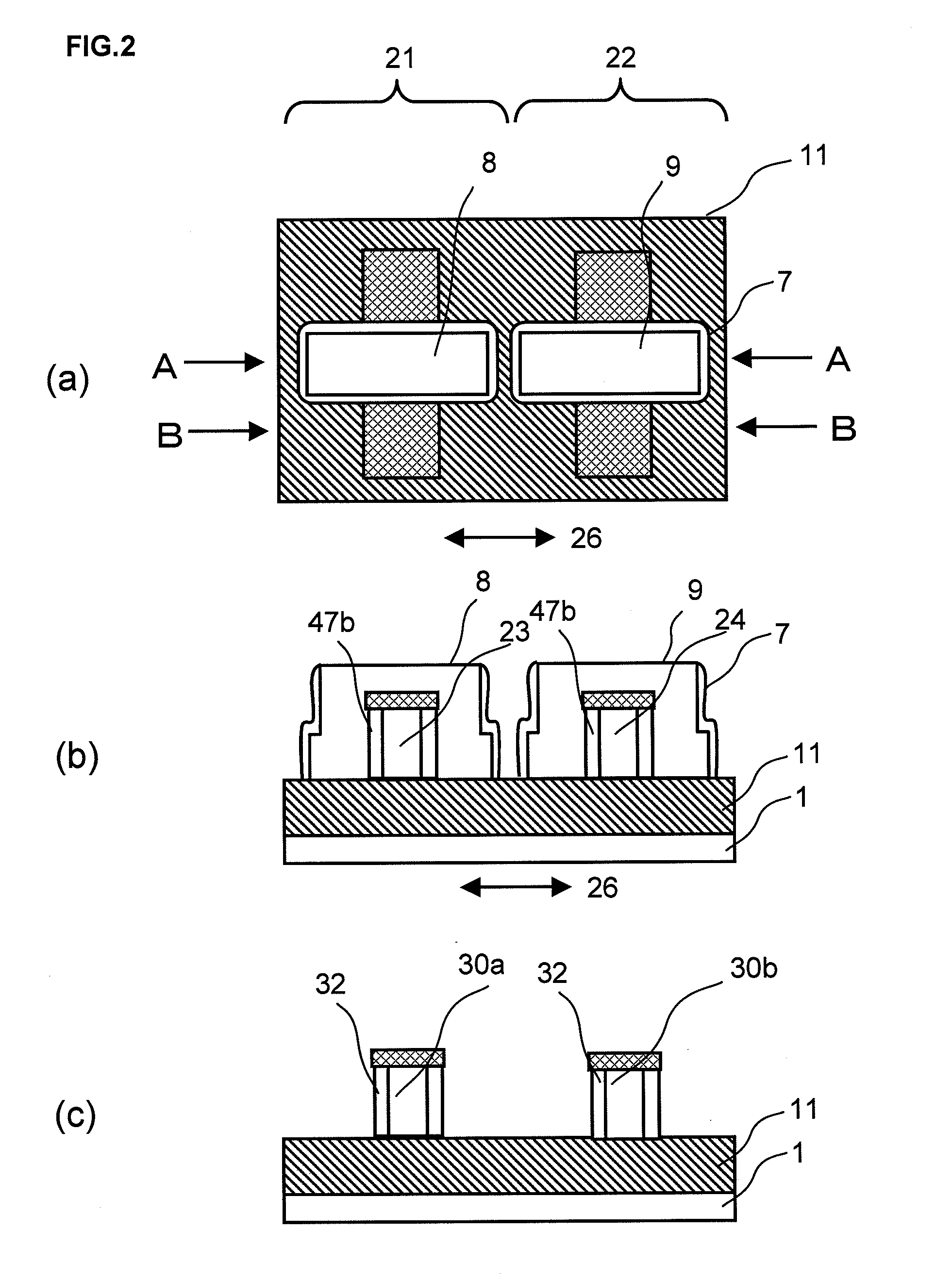Semiconductor device and method for manufacturing same
a technology of semiconductor devices and semiconductors, applied in semiconductor devices, electrical devices, transistors, etc., can solve the problems of difficult control of vsub>th/sub> of a fully depleted mos transistor to fall within either of the above ranges, and become difficult to control vsub>th/sub>to be a desired value, etc., to suppress the short-channel effect, low power, and high speed
- Summary
- Abstract
- Description
- Claims
- Application Information
AI Technical Summary
Benefits of technology
Problems solved by technology
Method used
Image
Examples
first exemplary embodiment
[0181]FIGS. 7 to 9 show an example of a method for manufacturing a semiconductor device of the present invention. FIGS. 7 to 9 show a method for manufacturing a semiconductor device including a planar pMOS transistor.
[0182]First, a substrate including support substrate 1, embedded insulating film 11, and silicon layer 42 with an n-type region is prepared. The thickness of silicon layer 42 in the substrate is adjusted in such a way that a manufactured pMOS transistor is fully depleted. The substrate can be formed by using bonding or SIMOX. For example, a smart-cut method or an ELTRAN method may be used.
[0183]STI (Shallow Trench Isolation) technique is then used to form isolation region 2 in silicon layer 42 so that n-type region 24 is isolated. Thermal oxidation is then used to form insulating film 19 comprised of a silicon oxide film on the surface of silicon layer 42.
[0184]High-dielectric insulating film 18 is subsequently formed on insulating film 19. To form an HfSiON film as hig...
second exemplary embodiment
[0203]FIGS. 10 to 14 show another example of the method for manufacturing a semiconductor device of the present invention. FIGS. 10 to 14 show a method for manufacturing a semiconductor device including planar pMOS and nMOS transistors.
[0204]First, a substrate including support substrate 1, embedded insulating film 11, and silicon layer 42 with n-type and p-type regions is prepared. The thickness of silicon layer 42 in the substrate is adjusted in such a way that each of manufactured MOS transistors is fully depleted.
[0205]Isolation region 2 is then formed so that n-type region 24 is isolated from p-type region 23, as in the first exemplary embodiment. Silicon oxide film 19, high-dielectric insulating film 18, poly-Si film (polysilicon film) 43, and mask layer 15 are sequentially formed on the surface of silicon layer 42 (FIG. 10(a)).
[0206]Patterning is then carried out to form a region comprised of a first gate insulating film, first gate electrode material 14b, and mask (D) 15b on...
third exemplary embodiment
[0215]FIG. 16 shows a variation of the first exemplary embodiment. The present exemplary embodiment differs from the first exemplary embodiment in that the present exemplary embodiment relates to a method for manufacturing a semiconductor device in which each of the first and second gate electrodes is comprised of two layers and the top layer is a low-resistance layer. First, after the same steps as those in the first exemplary embodiment are carried out for the steps that correspond to FIG. 12(b) and the earlier figures, sputtering is used to deposit Si layer 52 all over the resulting surface (FIG. 16(a)). Heat treatment is then carried out to cause the Ni2Si or Ni3Si crystalline phase that forms the second gate electrode (silicide region (2)) to react with the Si. In this process, Si is thermally diffused only into the upper portion of the second gate electrode by adjusting the period of the heat treatment, and only the upper portion of the second gate electrode becomes low-resist...
PUM
 Login to View More
Login to View More Abstract
Description
Claims
Application Information
 Login to View More
Login to View More - R&D
- Intellectual Property
- Life Sciences
- Materials
- Tech Scout
- Unparalleled Data Quality
- Higher Quality Content
- 60% Fewer Hallucinations
Browse by: Latest US Patents, China's latest patents, Technical Efficacy Thesaurus, Application Domain, Technology Topic, Popular Technical Reports.
© 2025 PatSnap. All rights reserved.Legal|Privacy policy|Modern Slavery Act Transparency Statement|Sitemap|About US| Contact US: help@patsnap.com



